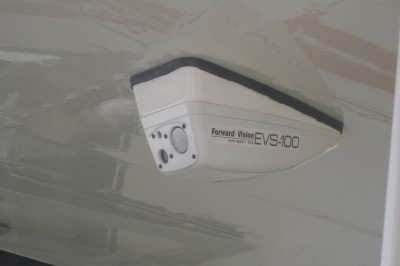Compliments Glass Panels And GPS Navigation
Controlled flight into terrain or unseen obstacles at night is a
hazard for every pilot. As more and more pilots come from a
computer or video game savvy generation, the expectation to be able
to fly in every condition grows. Today’s pilots have begun to
expect all weather capabilities and real time navigation from their
aircraft. The technology which provides these capabilities has been
largely relegated to the military or commercial sectors, but in the
recent years, technologies are emerging that the
“average” aircraft owner can acquire. Increasingly we
are seeing glass panels that provide “synthetic”
vision, coupled with GPS navigation, but these systems lack some
real world info that can be the difference a safe arrival or
not.

Patrick Farrell, President of Forward Vision says the
company’s EVS system is purposefully designed for general
aviation, but only as a reference tool, not to reduce minimums or
for precision approaches. Farrell said the technology was
“...fairly mature due to the military development, however
was not suitable for general aviation due to technological barriers
with such items as the infra-red detectors.” Overcoming the
hurdles to bring this product to market has taken 5 years of
research and development by Forward Vision.
Some of those obstacles included developing a method to prevent
“blooming”, where the entire view screen is saturated
with white when the detector was pointed at the sun or other hot
object, obscuring the field of view for some seconds until the
system resets to calibrate for the incoming signal. This blooming
and reset could occur as quickly as every 30 seconds and reset
typically takes 4-5 seconds. Forward vision has developed
proprietary software to overcome this problem, as well as
proprietary IR detectors and software to bring the price into an
available range for GA consumers.
Priced around $20,000 per unit installed, Farrell believes his
product is set to compliment GPS navigation via glass panels.
Farrell indicated that current units in field number around 200
with sales and installations of about 6 per week. The company
currently has STC approval for some 160 airframes currently and
hopes to have 85% of the perceived market approved by year end, and
is being well received by consumers.

Farrell said that the intended purpose and use of the system is
to provide a real world, real time reference for CFIT, spatial
disorientation, engine out at night, and entry into IMC. Also
visualizing deer on runways and other obstacles such as snow banks
increases a pilot’s ability to operate safely in reduced
visibility scenarios. Farrell said the system could see through
smoke, haze, and fog and is a primary reason American Champion
Aircraft has chosen to install the system on their new
“Aqua-Bama” water bombing aircraft.
As with any vision simulating system, orientation to what the
pilot views on the display and what is actually outside the cockpit
must be in agreement for the pilot to trust the system when the
soup gets thick. Both the Cirrus installation and the American
Champion units are mounted off the aircraft centerline. When asked
if this posed a problem for pilots Farrell responded that there is
about a 10 second learning curve for the pilot to orient the center
line of the aircraft with the centerline displayed on the unit. The
mental offset for the pilot merely involves remembering that he is
sitting some few feet to the left or right and becomes second
nature quickly. Farrell said that mounting the unit on the aircraft
centerline is possible and that the propeller does not interfere
with operation or display of the unit.
Farrell indicated that the future for EVS systems is the
integration of synthetic vision and infra-red. Combining the two
technologies would give the pilot the clear concise terrain display
of a moving map with instant navigation information and the real
world view of what is behind that cloud.
 ANN's Daily Aero-Term (04.14.24): Maximum Authorized Altitude
ANN's Daily Aero-Term (04.14.24): Maximum Authorized Altitude ANN's Daily Aero-Linx (04.14.24)
ANN's Daily Aero-Linx (04.14.24) Classic Aero-TV: 'We're Surviving'-- Kyle Franklin Describes Airshow Life 2013
Classic Aero-TV: 'We're Surviving'-- Kyle Franklin Describes Airshow Life 2013 Aero-News: Quote of the Day (04.14.24)
Aero-News: Quote of the Day (04.14.24) Airborne 04.09.24: SnF24!, Piper-DeltaHawk!, Fisher Update, Junkers
Airborne 04.09.24: SnF24!, Piper-DeltaHawk!, Fisher Update, Junkers




